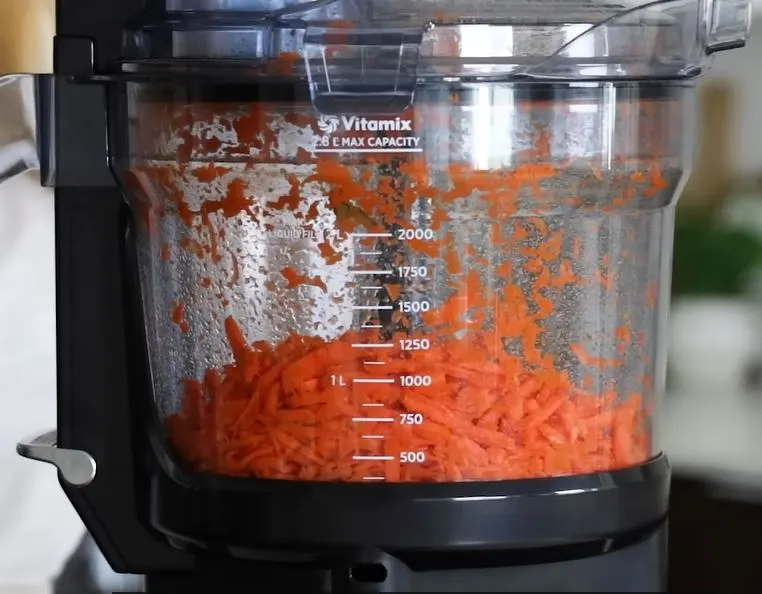Vitamix Blenders are one of the most powerful blenders on the market. These blenders can do almost anything; they can pulverize practically any fruit you can put in a blender, crush ice, and even blend dry ingredients like coffee beans. These blenders are so powerful in fact, that they can sometimes be used as food processors. Wondering how to use Vitamix as Food Processor? This article contains all you need to know about the matter.
Before we get into how to use Vitamix as a Food Processor, however, it is important to note the differences between a blender and a food processor, and how that affects how both of them function.
Differences Between a Food Processor and a Blender
While similar in many ways, food processors and blenders have quite distinct differences that affect their performance. Below are the major of these differences:
- Blades: Food processors have interchangeable blades and other attachments, each one designed for different tasks. Blenders on the other hand have only a single set of blades which are optimized for carrying out various blending activities.
- Consistency: Seeing as food processors come with various different blades, they are able to produce a wide range of textures with great consistency. Blenders on the other hand are often limited in the textures and consistency of the blends they produce.
The two differences mentioned above are what truly sets food processors aside from blenders. They are also what makes some tasks better suited for food processors, and other better handled by blenders.
While there is this rather obvious gap between food processors and blenders, certain blenders have been designed to sort of bridge this gap. These blenders often possess advanced blades which have been engineered to carry out a wider variety of blending and food processing operations, making them better at caring out a variety of food processing needs. They also come with several blade attachments and specialized containers for carrying out more specialized food processing activities.
Vitamix offers a variety of these kinds of blenders.
You might also find this article useful: Q&A: Can You Use a Blender Instead of a Food Processor?
How to Use Vitamix as a Food Processor?

The secret to using Vitamix blenders as food processors lies in having the right blender:
Step 1 – Prepare the Ingredients
The importance of this step can not be overemphasized. You want to get the ingredients you will be processing in your blender ready before you even get started.
Step 2 – Choose the appropriate setting
Use the lowest speed setting for chopping and gradually increase the speed for finer results. For some models, there may be a “Food Processor” setting that automatically adjusts the speed to meet your specific blending needs.
Add ingredients to the blender jar in small batches, using the tamper if necessary to help the ingredients move toward the blades.
Step 4 – Stop and check the results
Stop the blender when desired consistency is reached and use a spatula to scrape down the sides of the container if necessary.
It’s important to note that Vitamix blenders may have slightly different settings and functions, so it’s best to consult the manual or check the manufacturer’s website for specific instructions on how to use the blender as a food processor. With practice, you will be able to create delicious and healthy meals and snacks with ease using your Vitamix blender.
Tips for better food processing with Vitamix
Follow the tips given below to make sure your food processing experience gets better with Vitamix;
- Cut ingredients into small pieces: Cutting ingredients into smaller pieces will allow them to blend more evenly and efficiently.
- Use the tamper: Vitamix blenders often come with a tamper, which can help push ingredients toward the blades for smoother and more consistent processing.
- Process the ingredients in batches: Processing ingredients in small batches allows for more control over the consistency of the final product.
- Gradually increase speed: Start processing on the lowest speed setting and gradually increase to the desired speed for better control over the final consistency.
- Clean the blender after each use: Cleaning the blender immediately after each use will prevent any leftover food from drying and becoming harder to clean.
- Scrape down the sides: Use a spatula to scrape down the sides of the container while processing to ensure that all ingredients are blended evenly.
- Experiment with different settings: Vitamix blenders come with a range of speeds and settings, and experimenting with different options can help you find the best settings for the ingredients you’re processing.
- Add ingredients in the right order: Adding ingredients in the right order, such as liquids first and then solids, can help ensure that all ingredients are blended evenly.
- Use cold liquids to help ingredients blend: Adding cold liquids, such as water or coconut milk, can help ingredients blend more smoothly and efficiently.
- Consider using the pulse function for chunkier textures: The pulse function can be used to quickly chop ingredients, creating a coarser texture.
Final Word
In conclusion, using a Vitamix blender as a food processor can be a great way to save space and money in your kitchen. With a few simple tips and tricks, you can achieve the perfect texture and consistency for your food, whether you’re chopping vegetables, making nut butter, or blending the soup.